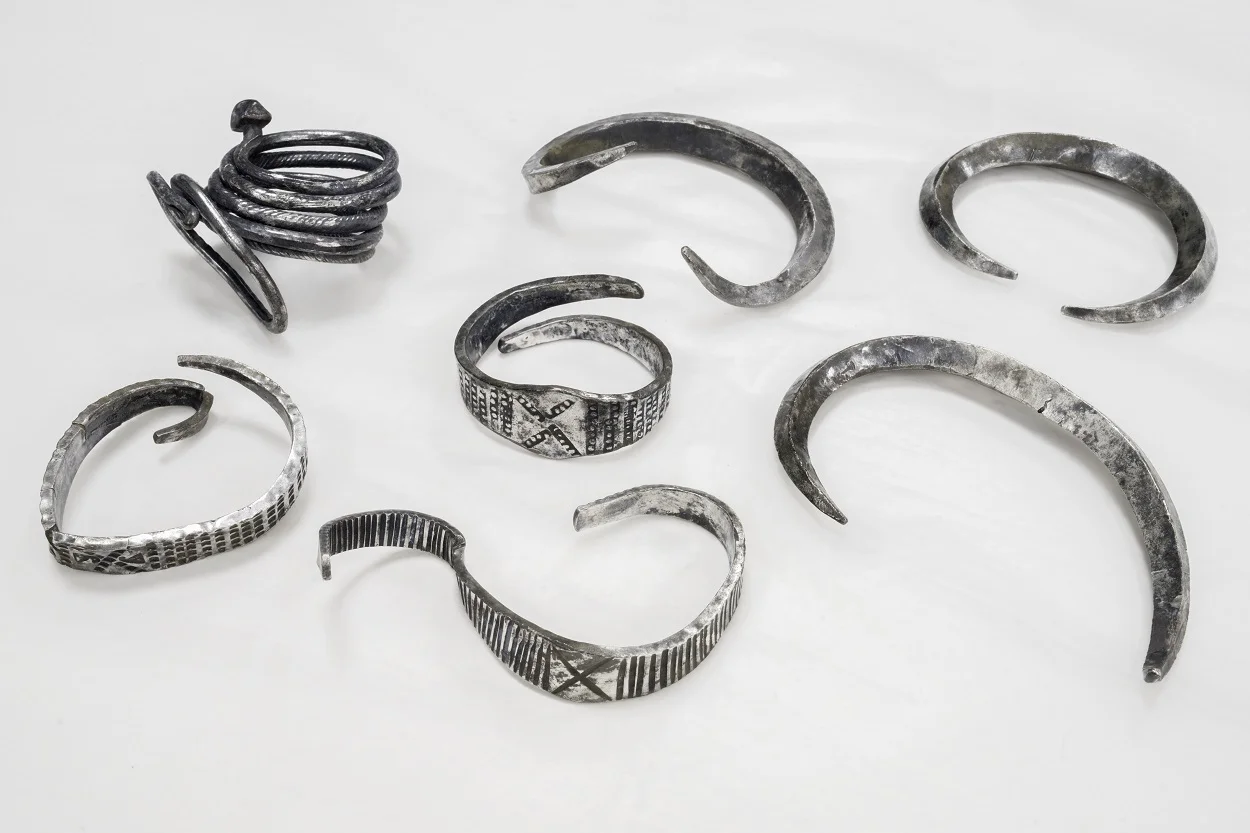An archaeology student from Aarhus University has discovered a silver hoard north of Aarhus, Denmark.
According to a press announcement by Moesgaard Museum, the hoard was found by Gustav Bruunsgaard in a field adjacent to Ølsted during a metal detector survey.
The survey uncovered a total of seven silver bangles which have been dated to around AD 800 during the Viking Age.
This date closely corresponds to the founding of Aarhus, which was established as a harbour settlement at the mouth of the Aarhus River. Aarhus would emerge as a major trading centre for sea-going trade due to its position on intersecting sea routes in the Danish straits.
A close examination of the hoard has indicated that the majority of bangles were crafted by artisans in Southern Scandinavia, while a coiled example likely has origins from present-day Russia or Ukraine.
Three of the band-shaped bangles have been stamped with an “X” rune symbol, generally thought to represent generosity or gifting. Symbolic stamping of this type is rare, but other examples are known from Scandinavia and the British Isles.
How the hoard came to be deposited in the Ølsted area is unknown, it may have been for security as a private holding, or buried during a period of conflict.
“The Ølsted treasure is a fantastically interesting find from the Viking Age, which connects Aarhus with Russia and Ukraine in the east, and the British Isles in the west. In this way, the find emphasises how Aarhus was a central hub in the Viking world, which went all the way from the North Atlantic to Asia,” says Kasper H. Andersen, Ph.D. and historian at Moesgaard Museum.
The hoard will be temporarily displayed at Moesgaard Museum, before being sent to the National Museum for a permanent exhibition.
Header Image Credit : Poul Madsen
Sources : Moesgaard Museum





